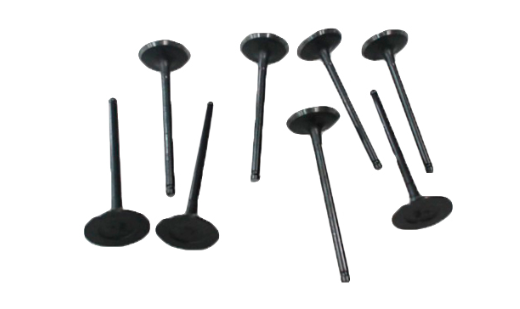Copyright © Shindary Automotive Parts Co., Ltd. All Rights Reserved
The two main types of valves are intake and exhaust valves, which control the flow of air and fuel in and out of the engine. Here's a summary of what they are and how they work.
Engine valves are located in the cylinder head and are essential for controlling the flow of air into and out of the engine's cylinders. This air is crucial for igniting the fuel that powers the pistons, causing them to move up and down.
There are two main types of engine valves: intake valves and exhaust valves.
- Intake valves allow air to enter the cylinders, while exhaust valves release exhaust gases. The more efficiently an engine can move air in and out, the better its performance and power output. This makes engine valves critical to overall engine efficiency.
Inside each cylinder, pistons move up and down. At the top of the piston’s movement, you'll find the valves. The number of valves per cylinder can vary by manufacturer. When the piston reaches the bottom of its stroke, the intake valve opens to allow air into the cylinder. After the air enters, the intake valve closes, sealing the cylinder to allow compression. As the piston completes the compression and power strokes, the exhaust valve opens to release the burnt gases, then quickly closes to prepare for the next cycle.
The opening and closing of these valves are controlled by a camshaft, which is a rotating shaft that pushes on the valves in a precisely timed sequence, ensuring proper engine function.

An internal combustion engine requires four key events, known as strokes, to function properly:
1. Intake Stroke: During the intake stroke, the intake valves open to allow an air/fuel mixture to enter the combustion chamber. In direct injection engines, the fuel is injected after the air is drawn in.
2. Compression Stroke: Both the intake and exhaust valves close, trapping the air/fuel mixture in the combustion chamber. The piston then moves upward, compressing the mixture and making it highly combustible.
3. Power Stroke: The compressed air/fuel mixture is ignited by a spark plug, causing rapid expansion. With the valves closed, this expansion forces the piston downward, spinning the crankshaft and ultimately driving the wheels of the vehicle.
4. Exhaust Stroke: The piston moves upward again, pushing the exhaust gases out through the open exhaust valve. Once the gases have exited, the exhaust valve closes, and the cycle begins anew with the intake stroke.
This cycle can occur up to 1,250 times per minute when driving at highway speeds!
Valves can fail for various reasons, but the most common issues are bent valves and burnt valves.
- Bent Valves: Bent valves occur when the piston makes contact with the valves, preventing them from sealing the cylinder correctly. In interference engines, where the piston travels upward past the lowest point of valve travel, a timing failure (such as a snapped or jumped timing belt) can cause the piston to collide with the valves, bending them.
- Burnt Valves: Exhaust valves are more likely to burn than intake valves because they operate at higher temperatures—around 450 degrees Fahrenheit hotter. Burnt valves result from an ineffective seal between the valve and valve seat, allowing combustion gases to escape and burn the valve edges. Common causes of burnt valves include engine overheating or using incorrect fuel.
Recognizing the symptoms of valve issues is crucial:
- Poor Engine Performance: Damaged valves can disrupt engine compression, leading to rough operation, especially at idle, and a noticeable loss of power.
- Engine Noise: A tapping or ticking noise, which may become louder and faster with acceleration, can indicate valve problems.
- Check Engine Light: The check engine light might illuminate due to damaged valves, though other issues can also trigger this warning.
- Engine Misfire: Bent or burnt valves can cause misfires, leading to jerking, stalling, or hesitation while driving, and increased fuel consumption.
If you notice any of these signs, consult a professional mechanic promptly.
Driving with damaged intake or exhaust valves can severely harm your engine. If you suspect a valve issue, avoid driving the vehicle until it is inspected and repaired by a mechanic to prevent further damage.
To diagnose damaged valves, a mechanic may perform a leak-down test, where compressed air is injected into the cylinder to check for leaks. Other diagnostic methods include using a borescope or removing the valve cover. In some cases, the cylinder head may need to be removed to inspect the valves closely.
After diagnosing the issue, your mechanic will conduct the necessary repairs to restore your engine's proper function.
Shindary Automotive Parts Co., Ltd.